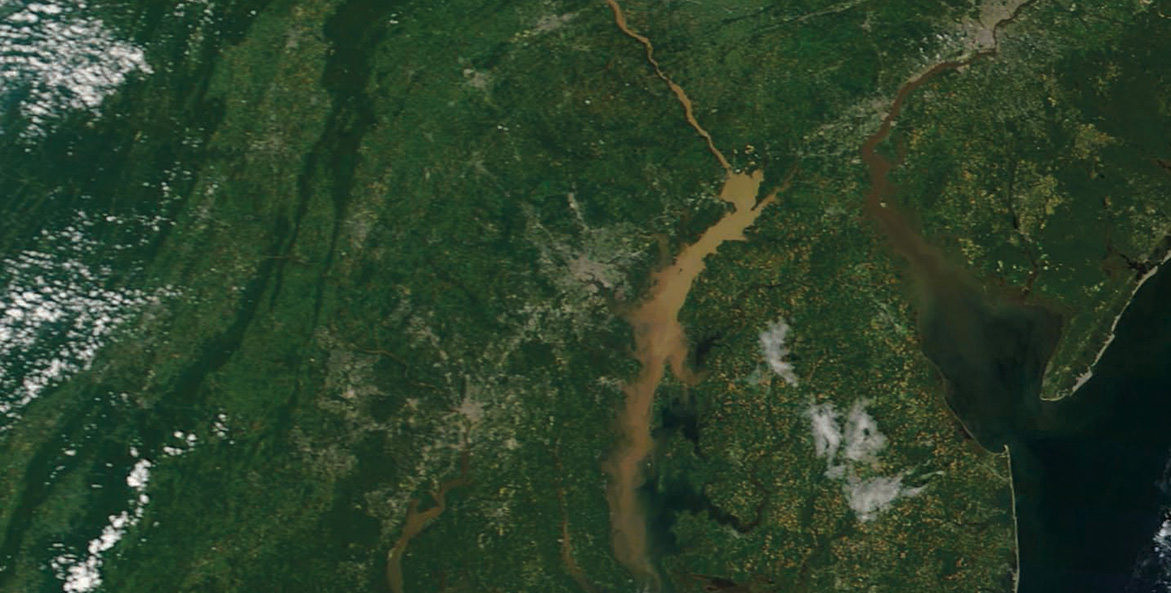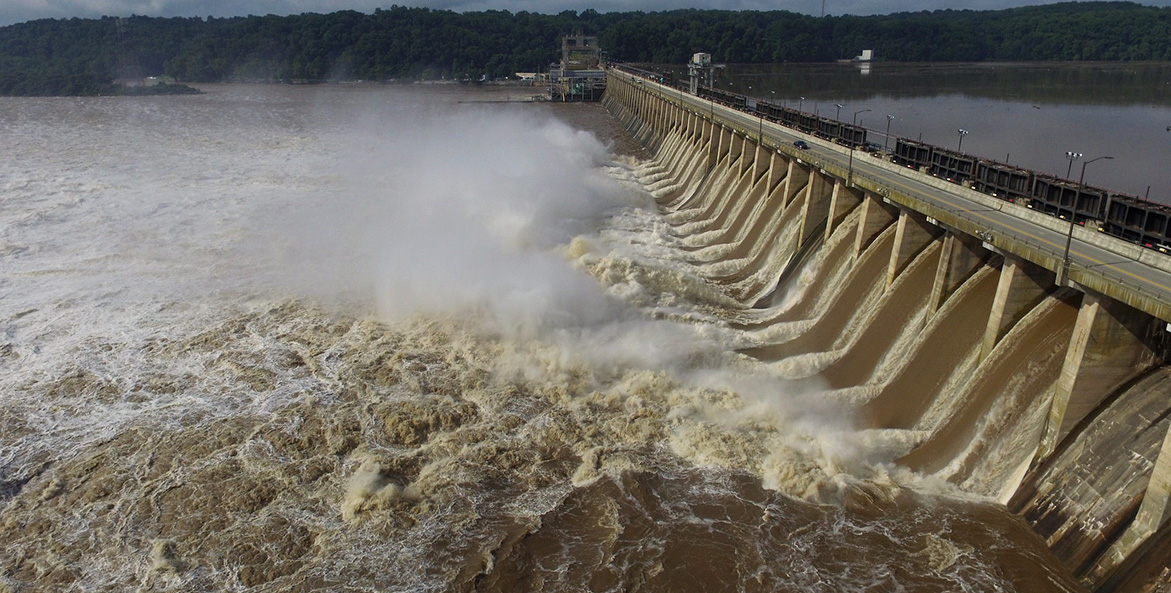It’s an opportunity to plant trees in Pennsylvania, educate farmers on regenerative agriculture, and, ultimately, reduce the amount of pollution reaching the Chesapeake Bay. The new Conowingo Dam license process can be transformative for the Bay, but only if Maryland officials can work through the challenges of dealing with the dam’s private operator, the utility Constellation Energy.
It wasn’t easy to get to this point. CBF and Waterkeepers Chesapeake filed a lawsuit after Maryland waived Conowingo Dam’s water quality certification as part of a deal with the dam’s previous owners, Exelon, in 2018. The deal without the certification was bad. It would have enabled Exelon to sidestep most of the suggested water quality improvements and pay a relatively small amount—an estimated $4 million per year—over the next 50 years to offset harm to the Bay caused by the dam’s presence.
Even worse, due to the lack of pollution mitigation requirements in the deal with Exelon, Chesapeake Bay watershed states were being saddled with reducing the additional pollution loads caused by the dam’s operations. A Conowingo Watershed Implementation Plan identified ways to reduce the pollution, which was estimated to cost at least $53 million per year. The federal Environmental Protection Agency later declared it had no confidence in the Conowingo cleanup plan because states had not identified ways to finance the work.
In late 2022, the U.S. Court of Appeals in D.C. agreed with CBF and Waterkeepers Chesapeake that Maryland couldn’t waive its water quality certification for the dam. This ruling nullified the negotiated agreement between Maryland and Constellation, the firm that took over the dam from Exelon, and brought interested organizations back to the debate over the water quality certification.
Addressing the Environmental Harm Caused by the Conowingo Dam
This is the moment of opportunity. Conowingo Dam is having a major negative effect on the Chesapeake Bay. Due to its operations, the dam alters the form and timing of how pollution enters the Chesapeake Bay. Maryland Department of the Environment’s (MDE) water quality certification identified the litany of reasons as to why the dam is an environmental problem.
- The reservoir behind the dam, which previously trapped sediment and some pollutants, is now full. When strong rainstorms hit, the deluge of water scours the trapped sediment, pollution, trash, and debris, and then sends them downstream in a short period of time. The flooding and debris from these events often generates headlines. What’s more, the sudden influx of pollution fuels harmful algal blooms that remove dissolved oxygen from the water, which harms marine life.
- The dam has caused declines in freshwater mussels and associated fish species such as eel, shad, and herring above and below the dam. These species were present in much greater numbers before the dam was constructed.
- The Susquehanna River would have a larger delta and support larger underwater grass beds without the dam.
To address these issues, MDE recommended the dam’s operator reduce pollution by 6 million pounds of nitrogen and 260,000 pounds of phosphorus per year. Doing so would ensure the dam doesn’t harm aquatic life in the Bay. MDE included several options Constellation could take to meet these requirements, such as purchasing pollution-reduction credits generated by entities such as wastewater plants that are filtering Bay pollutants; paying fees per pound of nitrogen and phosphorus that would fund Bay cleanup efforts; installing best management practices that reduce pollution; or dredging behind the dam.

This satellite image from September 12, 2011, shows heavy sediment pouring from the Susquehanna River far into the Chesapeake Bay following Tropical Storm Lee.
NASA Satellite Image
The Importance of Reducing Agricultural Pollution Upstream
The dam’s operators have the resources to make environmental improvements. Conowingo is one of the largest non-federally owned hydroelectric dams in the United States. An economic analysis commissioned by CBF and The Nature Conservancy in 2017 found the dam’s operators could spend from $27 million to $44 million per year on environmental mitigation projects while still generating a profit.
“We continue to encourage Maryland to require the dam’s operator to invest in upstream conservation practices to offset the environmental issues caused by Conowingo Dam,” said Alison Prost, CBF’s Vice President of Environmental Protection and Restoration. “We believe that investments in streamside forest buffers, green infrastructure to prevent stormwater from entering streams and rivers, and projects to reduce agricultural pollution in the Susquehanna’s watershed in Pennsylvania would be the most cost-effective and long-term solutions to offset the pollution exacerbated by the dam’s presence.”
Addressing upstream pollution, specifically from agriculture, is critical to restoring the Bay. Agriculture is the largest source of pollution to our waterways, but it is increasingly seen as one of the biggest opportunities to turn around a pattern of ecological degradation and create healthy communities. What’s more investing in farm conservation practices will not only improve water quality, but it would also inject an estimated $655 million annually into the region's economy. Pennsylvania, especially, would benefit from investment in agricultural pollution reduction practices as nearly 90 percent of the state’s required nitrogen pollution reductions must come from agriculture for the state to meet its Bay cleanup requirements.
Upstream improvements would be more cost-effective than dredging. A study conducted by several government agencies in 2015 estimated the annual price tag for dredging behind the dam to range from about $50 million to $250 million per year, with work needing to take place continuously until the dam was out of service. The report concluded that upstream mitigation practices to reduce pollutants would also “be more effective than” reducing sediment by dredging to improve water quality downstream.
“Constellation has a responsibility to step up and pay for its share of the solution to the pollution problems caused by the dam,” Prost added. “The company profits from the use of a natural resource, which is continuing to be harmed by the dam’s operations. It’s time for Maryland officials to hold the company accountable and save taxpayers from the expense of solving the problem.”
So, What’s Next?
Constellation can challenge the issues raised in Maryland’s water quality certification for the dam. CBF and others will be closely monitoring the license review process and providing input where appropriate. We are also working with our partners to ensure that any annual license issued by the Federal Energy Regulatory Commission for operation of the dam is as protective of water quality as possible until a new long-term license is in place.




